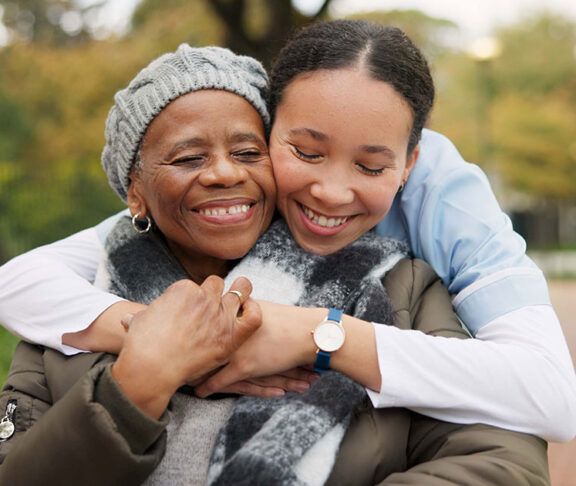One of America’s fastest-growing workforces doesn’t receive paychecks, vacation time, or even training for the critical jobs they perform. Yet, the more than 63 million family caregivers who provide over $600 billion worth of services annually will continue to soar in number as adults aged 65 and older increase from 58 million to over 78 million by 2035.

Diane Ty
Managing Director, Future of Aging, The Milken Institute
The U.S. life expectancy has increased by more than 10 years in the last seven decades. However, there is a 12.4-year gap between lifespan and healthspan — the years lived in good health. This means many Americans spend over a dozen years in poor health, requiring care. Consequently, 41% of family caregivers now provide care to an older adult.
A sudden phone call about a fall, stroke, or cancer diagnosis — or the increasing recognition of Mom’s repetitive questions and personality changes that lead to a diagnosis of dementia — is life-altering. Family members step in to provide care that can be episodic or become so intense that holding a full-time paid job becomes untenable.
America’s family caregiving landscape has often been measured by the “caregiver support ratio,” or the number of potential caregivers (ages 45–64) available for every person age 80 or older. This ratio was 7:1 in 2010 but is projected to fall to 4:1 by 2030 and to 3:1 by 2050. Since this measure first emerged in the 1990s, the projections have shaped policy discussions and fueled concerns about our aging society’s future.
The full picture
As striking as these figures are, the narrow age band of 45 to 64 and sole focus on care receipients 80 and over don’t fully capture the extent and complexity of today’s caregiving experience. Not only does the caregiver support ratio ignore millions of younger and older caregivers alike, but it also doesn’t account for the 1.9 million Americans ages 65 to 74 who are living with Alzheimer’s dementia — a condition that puts enormous demands on families.
Fundamental societal shifts have reshaped family caregiving. Men represent nearly 40% of caregivers, though they are both less visible and are less likely to seek support. Blended families, chosen families, and community networks outside of biological relationships are providing care.
Older adults themselves actively care for partners and siblings. Nearly 1 in 4 millennials (age 29–44) are caregivers, many assisting an older adult. A growing group of Gen Z caregivers, about 3 million, also provides care for an older adult while balancing educational and career pursuits. “Caregiving,” a new documentary by Bradley Cooper, highlights the 5.4 million children under 18 providing care to a loved one.
Women are disproportionately providing care, accounting for 61% of caregivers and often seeing impacts on their own health and financial security. Sandwich-generation caregivers are more likely to be looking after teenage or even young adult children while supporting parents typically in their 70s or 80s. For those with a paid job, peak caregiving years tend to coincide with peak earning years, creating what I call “club sandwich” caregivers, where that third slice of bread represents their career.
Supporting our caregivers
Caregiving extends beyond physical support to include financial tasks like paying bills, navigating insurance, preparing taxes, managing appointments, and assisting with technology for remote monitoring and telehealth.
We have an expanding caregiver population and must be thoughtful about what is needed to support the spectrum of the experience. Today’s family caregivers need financial support, inclusive policies like paid leave and tax credits, and open dialogue with employers. They need access to community resources, such as respite care and technology that supplements human presence. Measurement metrics must be updated to match the day-to-day realities of caring for our loved ones.
Above all, it is time for caregivers across all generations to be recognized and valued in new and meaningful ways by employers, policymakers, and society.

